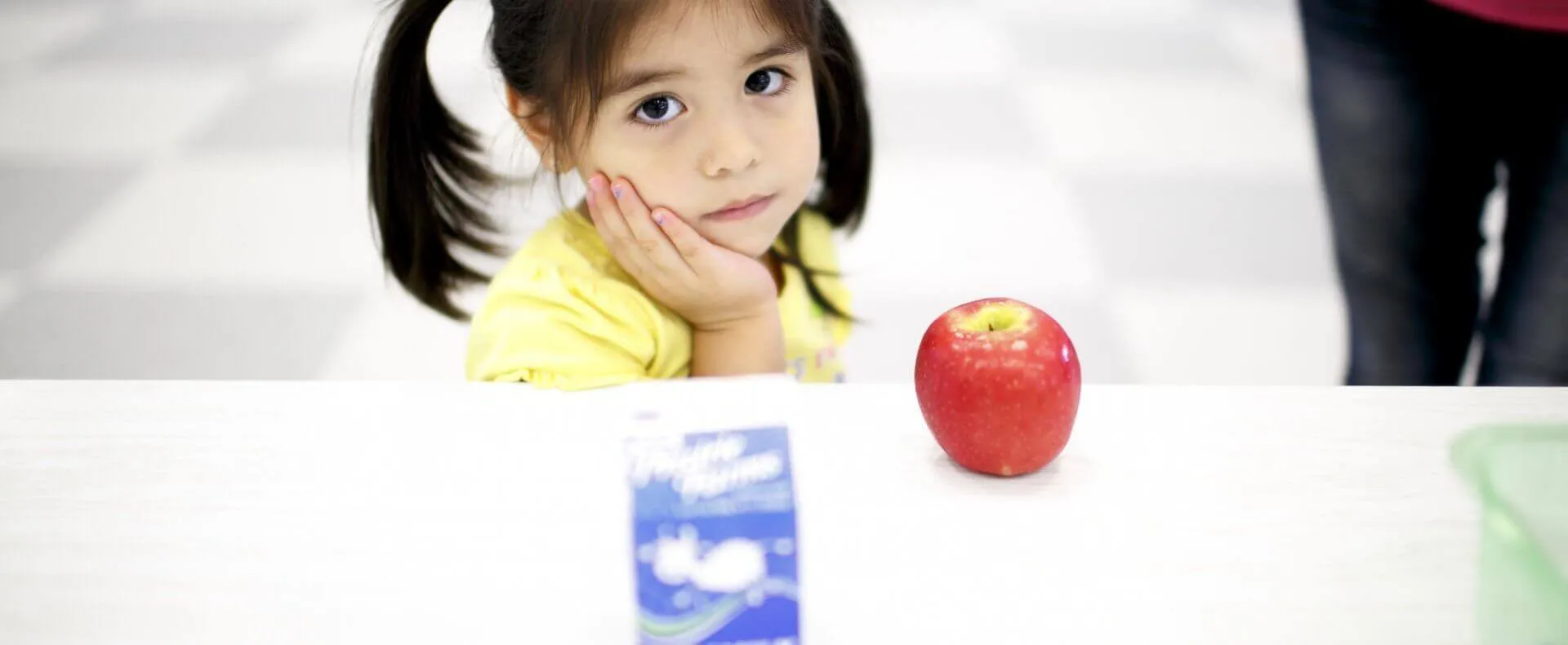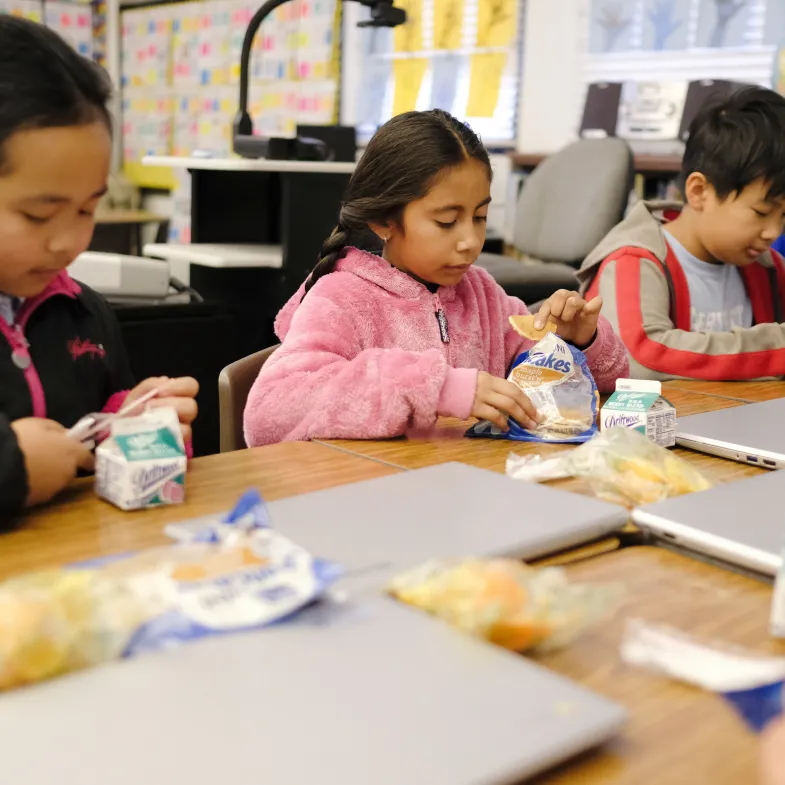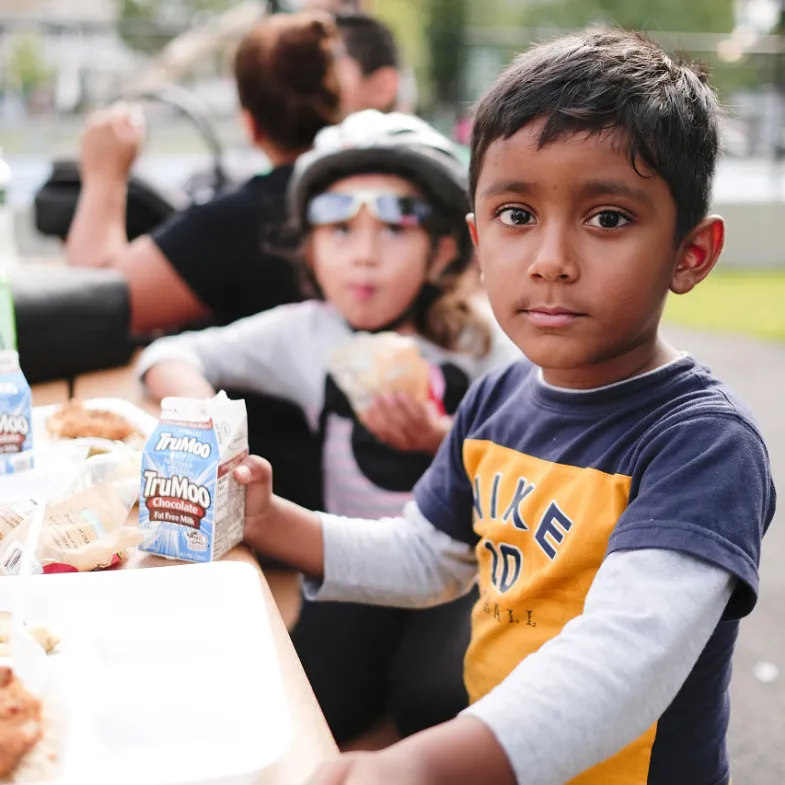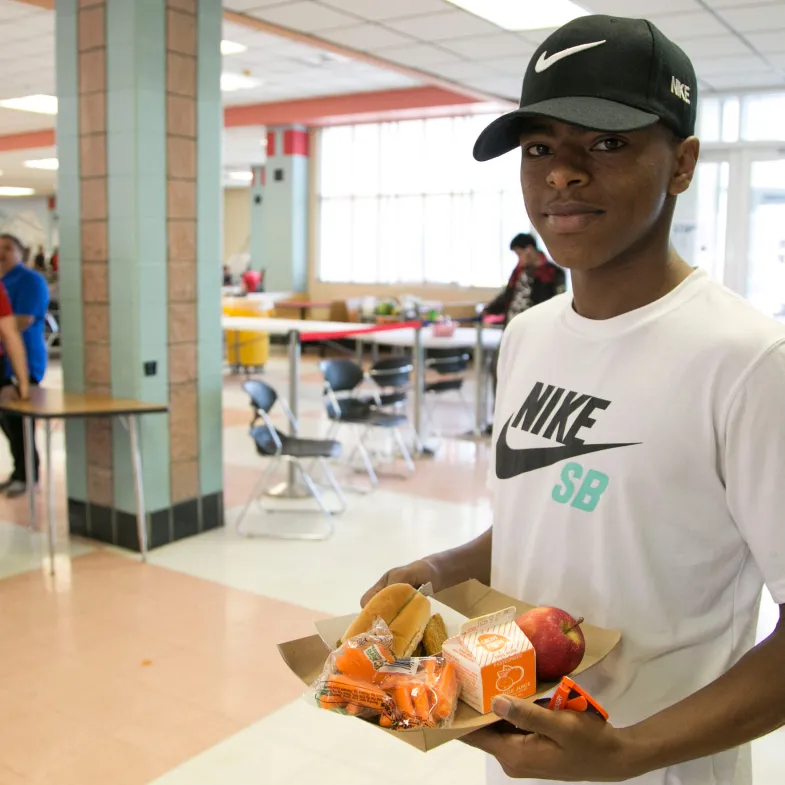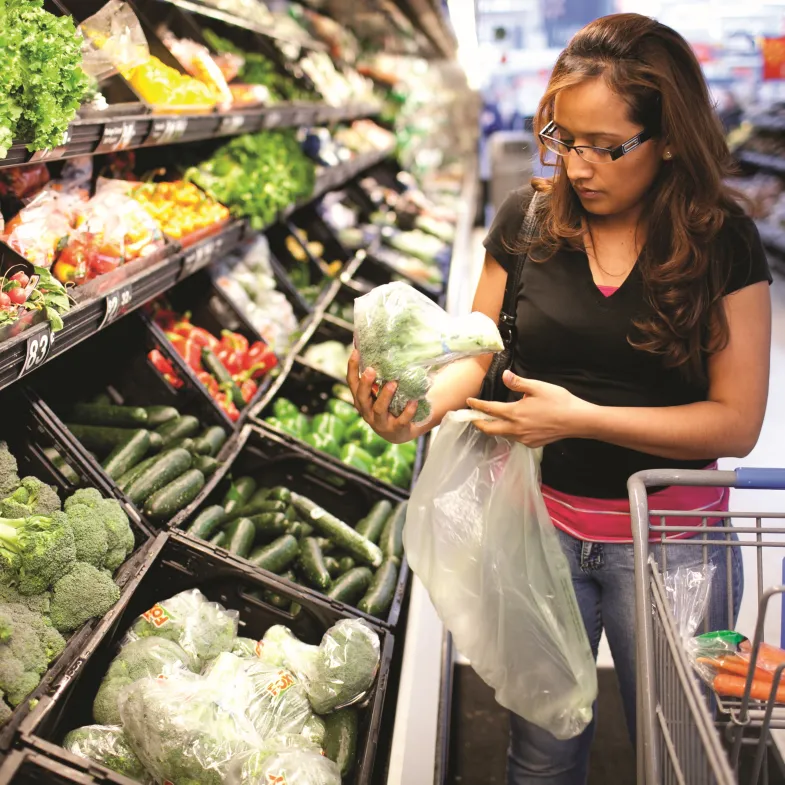There is no possible excuse for children to go hungry in this country. Yet it happens - every day, in every community.
According to the latest estimates, as many as nearly 14 million children in the United States live in "food insecure" homes. That phrase may sound mild, but it means that those households don't have enough food for every family member to lead a healthy life.
The number of children living with hunger had fallen steadily over the past decade, but the coronavirus pandemic dealt a terrible blow to our progress as a nation - one that No Kid Hungry and other organizations will work to reverse during the long recovery ahead.
Poverty and Childhood Hunger
As you might imagine, hunger is a problem that most often affects children from low-income families. A common way we measure poverty is the federal poverty level, a number set by the U.S. Department of Health and Human Services. The federal poverty level is the minimum amount of money a family needs each year to afford the necessities of life: food, clothing, shelter, and transportation.
In 2023, the federal poverty level was $30,900 for a family of four. Of course, this number is a minimum. Families making twice that much are still considered low-income by most experts, and many struggle to make ends meet.
How many Americans live in poverty? 43 million, or 12.9% of all Americans. According to 2023 "Supplemental Poverty Measure" data from the U.S. Census Bureau 10 million of those are children. This marks another consecutive increase in the child poverty rate, now at 13.7%. This continued spike from 2021, when only 5.2% of children were living in poverty, is partly due to the expiration of the enhanced Child Tax Credit, which was implemented in July 2021. The rise in child poverty highlights the need to strengthen and protect programs like the Child Tax Credit, SNAP, WIC, and school nutrition programs, which invest in the future of our children.
For a more comprehensive understanding of food insecurity, we recommend the USDA’s annual report on Household Food Security in the United States.
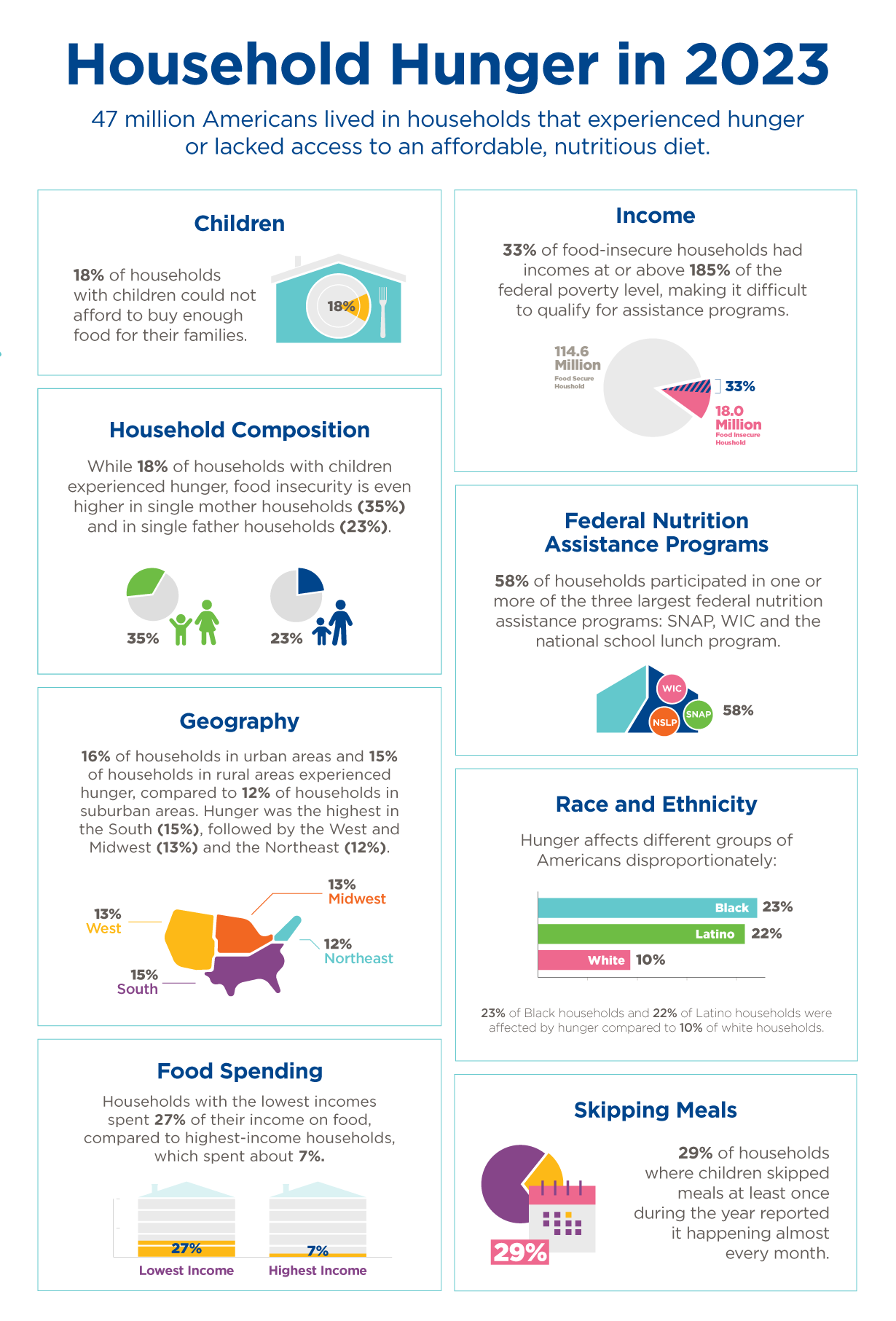
Federal Food Programs
One of the most effective ways to help families and children is through federal nutrition programs.
Some of the nutrition programs you may be familiar with are SNAP, WIC and the national school lunch program. These are critical lifelines for families in need.
No Kid Hungry supports these important programs, though we focus our efforts on other federal programs that we know can make an enormous difference for hungry kids, such as the school breakfast program, the national summer meals program and the afterschool meals program.
School Breakfast
Making breakfast part of the regular school day, just like lunch, has a powerful effect on kids. That’s why we work with educators, political leaders and local nonprofits across the country to change the way schools serve breakfast.
Summer Meals
Millions of kids rely on school for regular meals. But in the summer, those meals disappear. No Kid Hungry is helping community leaders with the funding and know-how they need to start summer meals sites, as well as advocating for needed changes to the national summer meals program.
Currently, the national summer meals programs reach just a fraction of the children who need help when school is out of session.
Afterschool Meals
The Afterschool Meals Program, part of the Child and Adult Care Food Program (CACFP), helps kids get the nutritious meals they need in a safe, supervised location after the school day ends. This program is the newest federal child nutrition program, so No Kid Hungry is working to ensure that more kids, families and teachers know about it and are able to take advantage of it.
SNAP & WIC
The Supplemental Nutrition Assistance Program (SNAP), sometimes known as food stamps, provides low-income families with money to purchase food each month.
What is SNAP and why is it so important?
SNAP is one of the most effective and efficient federal programs, as well as one of the most responsive, providing additional assistance to needy families during economic downturns. It’s also one of the most-needed: 42 million Americans rely on SNAP benefits to buy food each month, according to the USDA. Two-thirds of these benefits go to households with children.
What can you buy with SNAP benefits?
SNAP benefits are used to purchase food, including things like bread, cereal, fruit, vegetables, meat, fish, dairy products and snacks. You can’t use SNAP benefits to purchase alcohol, cigarettes, pet food, paper products and household supplies.
What is WIC and who is it for?
In addition to SNAP, one of the largest and most effective federal nutrition programs is the Special Supplemental Nutrition Program for Women, Infants, and Children (WIC). WIC benefits are primarily for children under the age of five or women who are pregnant or breastfeeding. According to the latest figures from the USDA, in 2023, the WIC program provided benefits to more than 6 million people from low-income households and served 39 percent of all infants born in the United States.
Through WIC, moms can get nutritious foods for their young children, as well as access to important services at WIC clinics, including nutrition education, counseling and referrals to local health and welfare agencies.
